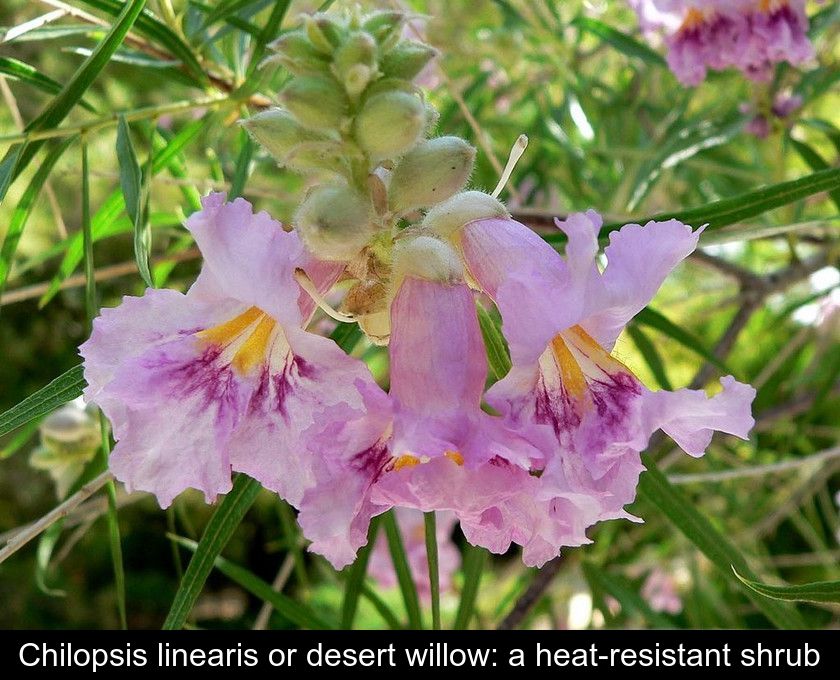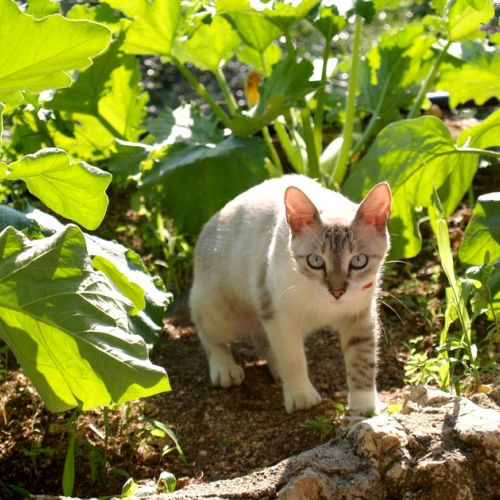Chilopsis Linearis Or Desert Willow: A Heat-resistant Shrub
Shrub native to the southern United States and Mexico, Chilopsis linearis is still little known in France. However, this heat and drought-resistant shrub should quickly find a place in our gardens. We invite you to discover the many advantages of this flowering shrub also known as desert willow.
1- It withstands summer drought.
The desert willow lives up to its name. This shrub from the Bignoniaceae family is native to the semi-desert areas of the southwestern United States and Mexico. In its natural habitat, the Chilopsis linearis grows on poor soils and withstands long months of drought thanks to its roots that reach deep into the ground to find water.
This flowering shrub, still little known in France, is therefore the ideal candidate if you want to create a garden without watering or if you are looking for a species capable of withstanding the heat and drought of our summers.
Another advantage is that this species is also resistant to cold! It shows hardiness down to -15°C. The aerial parts of the shrub can be destroyed at -10°C, but it will regrow from the base the following spring.
2- It produces graceful flowers in the summer.
This shrub, which has nothing to do with the willow family (the botanical genus Salix), owes its nickname of desert willow to the shape of its leaves and its slightly drooping habit.
Nevertheless, its greatest aesthetic asset lies in its summer blooming. From June to September, it produces bell- or tube-shaped flowers, gathered in colorful clusters.
The shape of its flowers, with wide-throated corollas, is reminiscent of the blooming of the trumpet vine and the catalpa, which belong to the same botanical family.
3- It comes in several varieties with various colors.
The type species of desert willow is characterized by fuchsia pink flowers.
But this heat and drought-resistant shrub also comes in multiple cultivars with varied colors:
• Chilopsis linearis 'Alba' with white flowers;
• Chilopsis linearis 'Desert Amethyst' with amethyst mauve color;
• Chilopsis linearis 'Rio Salado' with pink flowers marbled with white and mauve;
• Chilopsis linearis 'Lucretia Hamilton' with eggplant purple color;
• Chilopsis linearis 'Buba' with large dark pink flowers tending towards red.
In addition to their color palette ranging from rosy white to purple, the flowers of this shrub emit a slight violet fragrance when approached.
4- It promotes biodiversity in the garden.
Thanks to its sweet-scented bloom, the desert willow is a honey plant that attracts all kinds of pollinators to the garden.
Its corolla-shaped flowers are appreciated by butterflies and bees, especially the large black carpenter bees.
In autumn, the flowers give way to elongated pod-shaped fruits. During this time of year, this shrub also promotes biodiversity in the garden because its pods contain seeds that birds are fond of.
5- It requires little maintenance.
The last good reason to adopt Chilopsis linearis in your garden is undoubtedly its ease of maintenance. Once well-established, this shrub, highly resistant to sea spray and heat, will require neither watering nor special care.
You only need to water it regularly during the first year, allowing time for its root system to penetrate deeply into the soil. After that, it will demonstrate exemplary frugality, and you can stop watering.
Note: due to its powerful root system that can reach a depth of 15 meters, it must be planted away from masonry and pipes of your house.
In regions with mild winters, you can plant it in the fall. Elsewhere, wait until spring to plant it.
Install it in full sun in very well-drained soil, preferably sandy, rocky, and poor. Chilopsis linearis does not like rich soils and should never be given fertilizer!
The only maintenance task is to prune dead or damaged branches at the end of winter. Be careful not to prune it too short because it blooms on the previous year's stems! Pruning too severely could prevent it from flowering. Also, note that this shrub starts growing late, usually in May.





